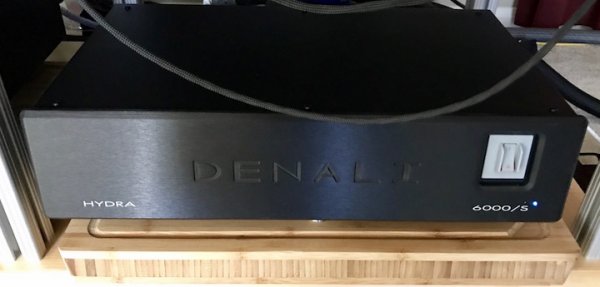Thanks both for your answers.
Sorry to use the wrong term, but won't an electromagnetic breaker work as a power switch or is it not built to be flipped very many times?
I recognize the theoretical benefits of having no additional breaker in the circuit (D2000T) but assume that the breakers chosen for the D6000S and D6000T don't impact the sound yet do provide a switching function for those that want it. Right?
As for aesthetics, I now see how the D6000S gray breaker matches the writing of the model name, but it sticks out in pretty high contrast to the black casework. I personally like how the D6000T black breaker matches the black casework. The D2000T and D6000T also look to have a subtler silver logo vs. the D6000S so look better to me, but those are minor details and I'm interested for the sound much more than the looks.
The electromagnetic breakers are not intended to be used as on/off switches for the system, they are purely for protection. Switching on a system using a breaker represents several issues, foremost of which is the massive in-rush current that can trip your panel breaker or carbonize contacts at your components, wall outlet and breaker. High-end components should all be turned on one at a time, starting with sources and pre-amps and ending with the amps.
One gentleman became upset with us because every morning for years, he would turn on his entire system via his Belkin power conditioner using his big toe (for convenience). He always had used a stock power cord, but one day decided to switch to one of our affordable power cords connecting his Belkin to the wall. The next morning, he went to turn on the system with his toe and everything shut down. Breakers blew and he lost a fuse or two. He believed our power cord had a short. I was able to prove otherwise by having him connect it to a single component. I explained that the increase in peak current efficiency of the better power cord increased the in-rush of instantaneous current and tipped the system over in terms of too much current all at once through the breakers. In addition, when he replaced the breaker and looked at the internals of the wall outlet, the amp IEC (I asked him to) and the panel breaker that fed the system, he found that all the contacts were blackened (carbonized) due to years of turning on all components at once with a single switch. Essentially it was an accident waiting to happen and the superior peak-current (DTCD) efficiency of our power cords was all it took to put the carbonized contacts and system over the edge.
I have explained this any number of times to customers and it is also in our manuals for a good reason. Breakers are for protection and should not be used as on/off switches for the system because it will gradually degrade the contacts of not only the Hydra breaker, but also the breaker at the wall, the outlet and the IEC's of some components. The more a breaker trips or is switching on a system, the easier it will trip when stressed.
I hope this helps explain the role of a good breaker. The electromagnetic breakers we use have massive metal contacts and are the best in the industry, but are still not intended to be used as an on off switch
Best regards,
Grant


